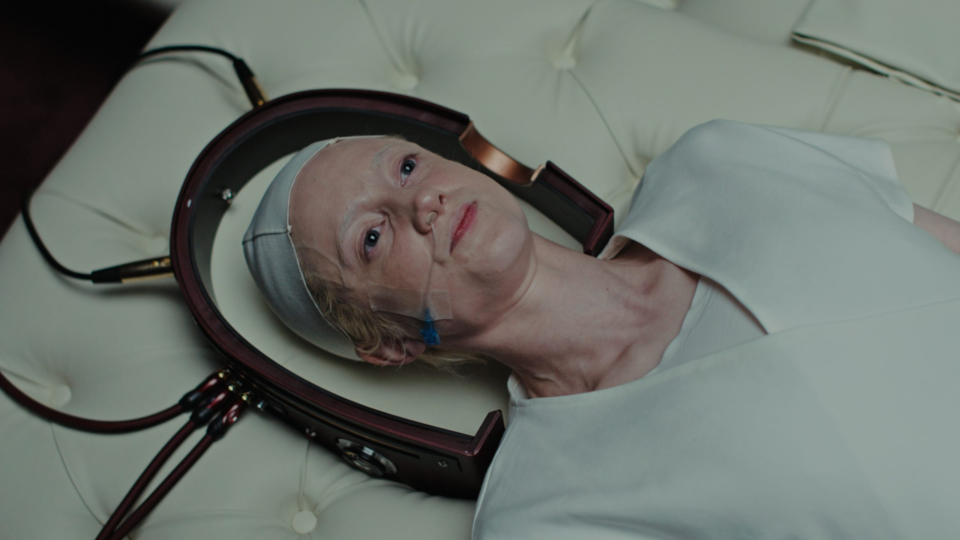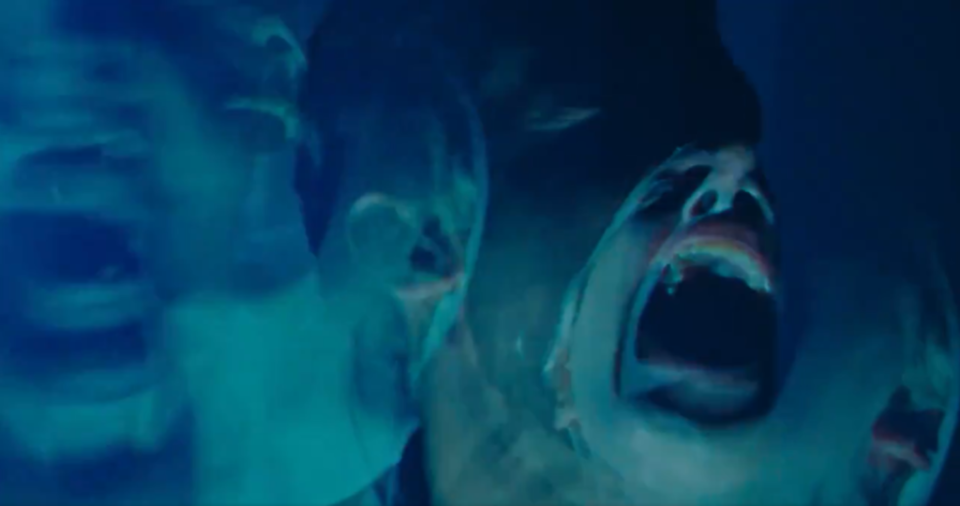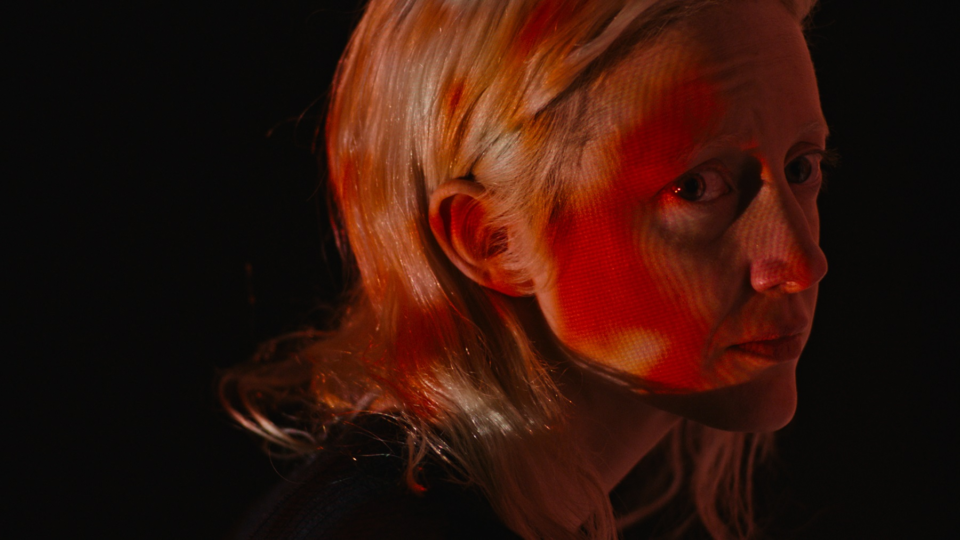The Colors of Brandon Cronenberg’s ‘Possessor’

In 2020, Brandon Cronenberg unleashed is psychological science-fiction horror movie Possessor onto the world. The director-writer’s second feature-length film set in an alternate 2008 centers around assassin Tasya Vos (Andrea Riseborough) who is able to take control, through the use of technology, of other’s bodies to carry out the murder of her targets. Despite being her company’s star employee, Tasya struggles with separating her work from her family life, and finds intrusive and violent thoughts seeping into her downtime. Whilst possessing the body of Colin Tate and attempting the assassination of wealthy and powerful CEO John Parse (Sean Bean), she begins to find it increasingly to keep control of Tate, eventually discovering that she cannot leave his body. As the psychological battle between Vos and Tate escalates, the lines between each personhood blurs, to devastating consequences.
After its premiere at the Sundance Film Festival in 2020, Possessor was praised for its combination of body horror and technological abuse, themes which seem to be a Cronenberg family heirloom, as well as its stark and poignant portrayal of privacy rights, capitalism, and workers rights as well as bodily autonomy. As well as the depth to which its subject matter is expressed, Possessor’s cinematography and in particular its employment of color theory propels the film into the sphere of a visual masterpiece.
Through the medium of film, color theory is put into practice to elicit specific responses from audiences. Whether its use is to evoke an emotional reaction or a visceral one, certain colors are used within a film to manipulate viewers into experiencing a mood of the director or cinematographer’s choice. Color theory can be projected through the use of lighting, costume, set pieces, or makeup. Possessor uses the triadic color concept throughout the film, which involves the use of three colors—in this film’s case the primary colors of yellow, blue, and red—that are evenly spaced on the color wheel which creates an intense contrast. n Cronenberg’s film, much of the utilization of the color theory is centered around the physical environment Tasya occupies as well as her psychological condition. It’s mainly portrayed through the use of light, but can also be seen in costume and décor.
In the opening sequence of Possessor, audiences are introduced almost immediately to this color scheme through the depiction of Tasya’s initial possessee. The hostess she possesses is wearing a bright blue uniform with blue eye makeup, then enters an elevator doused in red light and finally ascends a yellow staircase before carrying out her hit on her intended victim. The journey through these three bold primary color schemes is used to indicate the procession of the film and is almost a forewarning.
Despite the triadic color scheme being the main color theory utilized in Possessor, white is very much the base color throughout the film. Tasya’s workplace is primarily white, representing a sterile and clinical environment. Whenever her career is at the forefront of the narration, Tasya is wearing white-colored clothes. As she monitors Colin Tate to learn his mannerisms before the possession, Colin’s clothes and his apartment are also white. This portrays Tasya’s job as always being her main focus, she is always working or at least thinking of work, even when she is not physically in the field.
Towards the end of the film, when Tasya is pulled out of Colin’s body after the murder of her husband and son, we once again observe the stark whiteness of her physical place of work, but this time the white takes on a new meaning, close to the color’s symbolic meaning of death and rebirth.

Blue is a color that occurs throughout the film during moments of the outside world to represent honesty, security, and truth. The inside of Tasya’s house is decorated blue, as is her son’s bedroom. Even the characters during the dinner party scene are bathed in blue light. This is Tasya’s reality when she is not at work, her world when she is not acting as someone else. Colin Tate’s life is also shrouded in blue, and during instances of a power struggle between him and Tasya, we see his personhood represented by the color.
Tate’s apartment is shown to be full of blue accents, from the color of a cupboard, blue mouthwash and underwear, even his work uniform is blue. Even when Tasya has full control over Tate’s body, the scene is bathed in blue as Ava (Colin’s girlfriend) attempts to have a frank and honest discussion with him, as well as the moment when Ava and Colin/Tasya have intercourse, proving that despite Colin actually being Tasya, it is a very genuine moment for her.

Yellow is Tasya’s color. It is the only color, save for black text, used in the title sequence of the film. Generally speaking, the symbology of the color yellow is used to denote deceit, hazardousness, and insanity. In Possessor yellow portrays Tasya’s psyche and instability, shown primarily in scenes when the audience is privy to the psychological situation occurring between Tasya’s mind fighting against Colin Tate’s attempt to regain control. When Tasya is meant to commit suicide in Colin’s body, thus ending her mission and bringing her back into her own body, flashes of colors occur across the scene, with Tate’s mind represented by blue, fighting against Tasya’s yellow, which then becomes a battle of wills by the two characters.
Red is the last color in the triadic scheme that is used within Possessor and this is used as a warning color, signifying danger, aggression, and power. One of the very first sequences where red is seen as a dominant color, apart from the initial elevator sequence in the opening, is when Tasya meets with her boss to talk about returning to work. Tasya stands in front of a projector that is projecting the color red directly onto her face, a forewarning for the danger that lies ahead should she resume her role within the company.

This red warning light is then continued on as Tasya possesses Colin Tate, initially shown in the transformation sequence when the blue light becomes an aggressive red, and then once Tasya wakes up in Colin’s body in his apartment. His bedroom is bathed in a strong red light, again serving as an ominous sign that this is the beginning of a huge pitfall.
Red is consistently used throughout the film as a sign of incoming violence. Once Colin regains a sense of control after the murder of his girlfriend and the attempted murder of John Parse, he makes his way to his friend Reeta’s apartment. The apartment is a neutral color, yet the scene is flecked with red objects like suitcases, or the red bra strap that Reeta is wearing, projecting a sense of foreboding that this will be a place of bloodshed.
The sense of warning and foreshadowing is also shown in Tasya’s son and his clothes when Colin meets him in the street while on his way to attack Tasya’s family to draw her out. Her son is wearing a bright red jacket, again, signaling that the child will soon become a source of violence and endangerment, bringing the film to its bloody and shocking conclusion. Red cements itself as one of the more important color elements of Possessor during the final sequence, portrayed in the color of the pinned butterfly Tasya must describe to her boss. Despite butterflies being symbols of rebirth, the red color of the insect symbolizes the amount of blood that has been shed and the resulting death that has been necessary for Tasya to become reborn as a perfect assassin worker with no emotional or familial ties.
The triadic color scheme used throughout Brandon Cronenberg’s Possessor is an intense color palette that signifies and represents the heightened psychological aspect of the film. The harsh and excessive use of primary colors blue, yellow, and red is disconcerting and disorientating, that combined with the body horror elements of the film, makes for an overwhelming and disturbing experience.
Categorized:News

